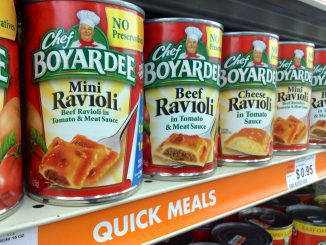
The national anthem was about to begin, but Claude Reynolds struggled to get to his feet. On the sideline at Clemson’s Memorial Stadium to see his Tigers play Duke, “Chuck” was in pain and exhausted from the cancer that would end his life a year later.
His family members told him he didn’t need to get out of his wheelchair, but Chuck shook his head.
“I don’t sit for the national anthem,” Chuck declared as he gained his feet.
Reynolds, 84, was stubborn as ever, a streak that had carried him from a modest farm in Iredell County to Reidsville where he helped win a state football title to Clemson, where he played on legendary coach Frank Howard’s first team in 1940.
Thoughts of Chuck, whose daughter is my aunt, came to me after hearing former NFL coach Tony Dungy’s commentary about NFL players’ protests during the national anthem, a trend that began when San Francisco 49ers reserve quarterback Colin Kaepernick announced he would not stand when the anthem was played.
In a well-reasoned editorial, Dungy recalled his father telling him in the wake of the silent protest by two black American athletes at the 1968 Mexico City Olympics that whatever he chose to do, he should “do what you think is going to make the situation better.”
Dungy didn’t mention Kaepernick. But he certainly seemed to be saying that while protests could be important and effective, one could go about it the wrong way.
John Carlos, one of the men who raised his fist on the medal stand in Mexico City, said last week that the only way to effect change in America is “when you shock them.” Far from it. From Abraham Lincoln to Martin Luther King to Ronald Reagan, the most persuasive figures in America’s history have been ones who have changed minds by appealing to Americans’ shared values and ideals the “better angels of our nature.” It wasn’t the fact that black Americans held marches in 1965 Alabama that shocked anyone. It was the extreme reactions to the marches beatings, arrests, deaths that shocked and shamed the nation, hastening change.
Kaepernick lost any moral authority he might have had after photos surfaced of him wearing socks that depicted police officers as cartoon pigs. That buffoonery contrasts with what Dungy said:
“There was a time… when I didn’t stand up for the national anthem. But as I grew as a Christian man, I felt like that wasn’t the right thing to do for me. There was something I could do to make it better. So when I saw racial injustice that I perceived, I stood for the national anthem, but I bowed my head and I prayed that God would make us a country that really was the land of the free and the home of the brave I thought that’s the way I personally could protest but make the situation better.”
At Clemson in 2003, Chuck Reynolds was also able to look back on a life of striving to make the situation better. He flew planes for the Navy in World War II, once spending 24 hours in the Pacific after being shot down by the Japanese. By the time he returned to North Carolina to marry Reidsville’s Genie McDonald, he had earned the Distinguished Flying Cross and the Air Medal.
Chuck and Genie’s two children, who now live in Winston-Salem and Wilson, are on opposite ends of the current American political spectrum, but both continue to fight for what each believes is right. And they continue to follow the example Chuck Reynolds set throughout his life striving to improve the country and acknowledging that American democracy, while not perfect, is the best hope for human freedom and progress. It is that hope, combined with the remembrance of the sacrifice that keeps it alive, that is worth standing for.



